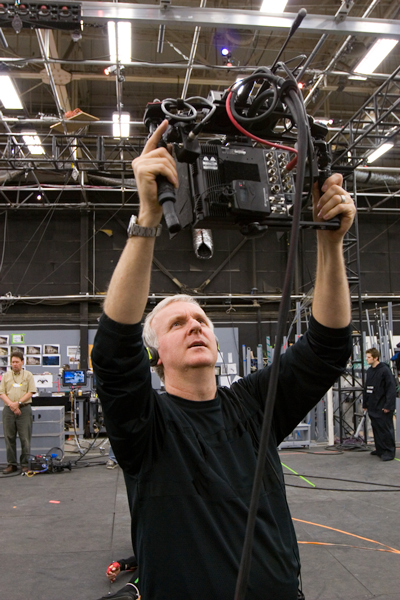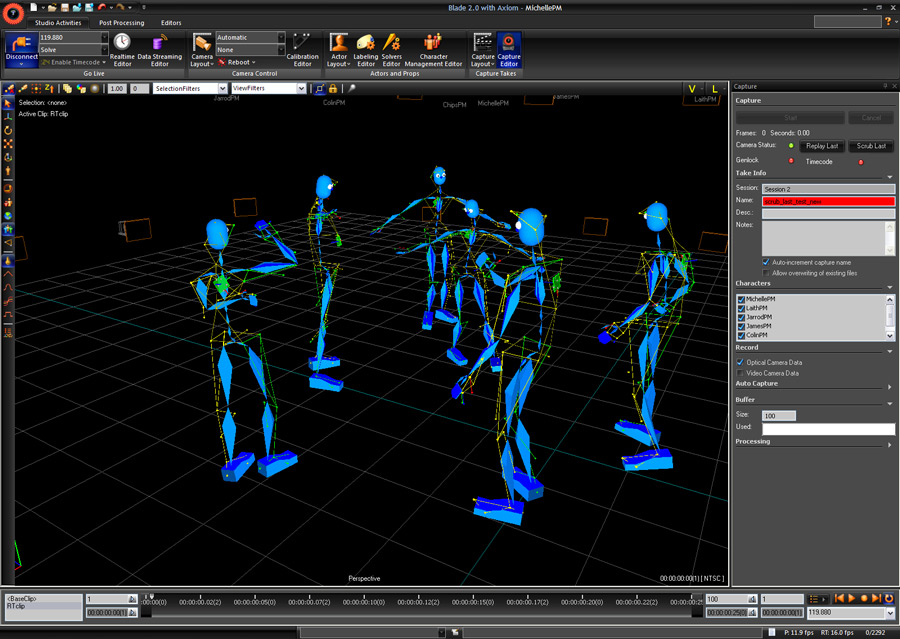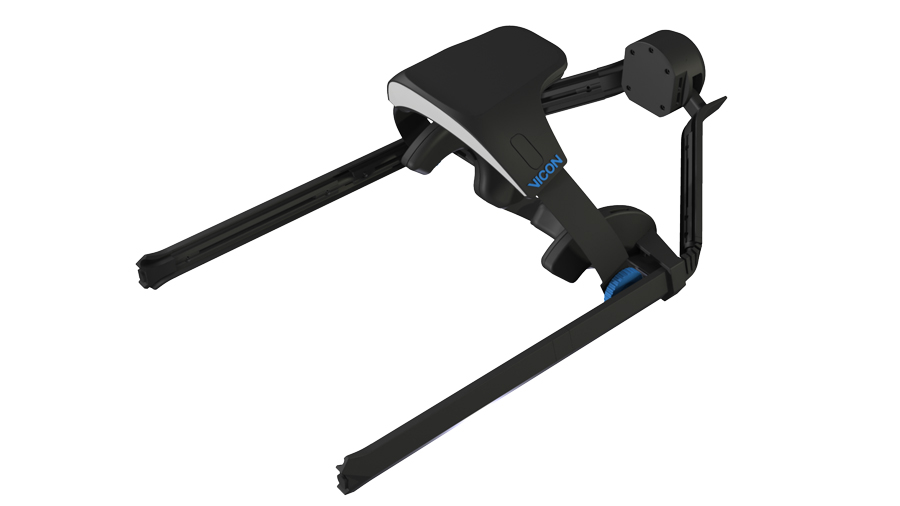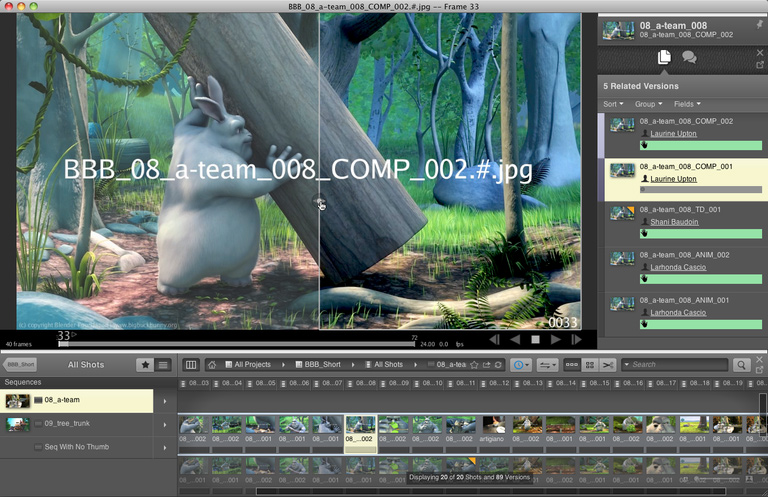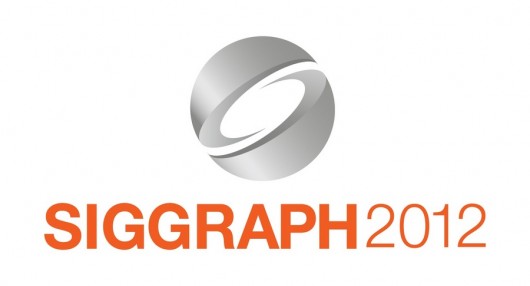 SIGGRAPH 2012 – Wednesday Aug. 8
SIGGRAPH 2012 – Wednesday Aug. 8
Well, finally back from another day of strolling the aisles and perusing the booths looking for anything that I think will interest the Microfilmmaker community. There is great deal to get excited about for the future of film making and the developers that are creating the tech to make it happen. Here are the hits from today.
Autodesk
Checking out the release of the Autodesk 2013 Entertainment Suite, I noticed a lot of attention being brought to tools that would aid in productions that would be heavily dependent on collaboration when it came to CG. When I sat down with Bruno and Rob from Autodesk today, they expanded on the reasons for why that is and their new dedication to the Virtual Production movement that is gaining traction in studio production. Starting with Avatar, James Cameron’s Lightstorm Entertainment, with collaboration from Weta Digital, have set the groundwork for for this amazing new process of creative development.
Imagine yourself as the director scouting a location on an empty platform in a closed set. But instead of seeing an open expanse through your viewfinder, you’re viewing the virtual world that your previs team has modeled earlier in preproduction. The Virtual Production is a merging of preproduction and actual production so that filmmakers can continue to refine their ideas without having to be pinned down to what has already been planned. Assets can be used further and more ideas can spring spontaneously because you can see more of what’s going to be on the final reel at post.
To that end, Lightstorm Entertainment, Weta Digital, and Autodesk have partnered to streamline the process and build around this new paradigm of film production. With 2013 you’ll see the first wave of improvements that will set the stage for production houses to evolve their pipeline to make use of this filming technique. 3ds Max has received the Particle Flow system which is best known for its stunning replication of natural phenomenon such as rain, ocean waves, smoke and fire. it also comes with Advanced Data Manipulation toolset for custom Particle Flow tools as well as Cache Disk and Cache Selective to speed up the workflow of working with those simulations. Maya uses DX11Shader to take advantage of Microsoft Direct X 11 to make high-end graphics more efficiently. The new Alembic file format, File Referencing, and Scene Assembly are all tools made specifically for handling big scenes with large data sets in a team environment. And finally, MotionBuilder has been overhauled to handle scenes faster and with better integrity so that they can be integrated into the editing process. In a Virtual Production environment, shot takes can be transferred quickly and saved to be refined on set and provide immediate feedback to the film crew.
Vicon
The software and hardware that come out of Vicon are admittedly out of the price range of most indie filmmakers. Nevertheless, it would be prudent to be aware of any technology that you may come across in the future. Who knows? You may get a chance to try it out on a production.
That being said, Vicon is proud to announce Blade 2, a motion capture system that boasts clean, continuous capture of data for animation. Powered by Axiom, it is built to handle multiple characters at once with the ability to adapt to occlusion and challenging motions. Being able to retain quality animation with real-time feedback helps to make your job as director as creatively unhindered as possible.
The developers at Vicon have re-imagined how technicians capture facial performances. Completely independent of the Vicon hardware system, the Cara headset is a mobile motion capture system for facial expression that does away with the need to stick marker objects on the face. By applying some makeup for registration, this device can record expressions to be delivered either wirelessly or downloaded later to your computer. And if you choose, you can use their software to clean it up and manage the data, or send it to any of the other motion capture animation packages of your choosing.
Tweak and Shotgun Software
These two developers have come together to engineer an amazing tool for managing media in production. Whether your a large production house or a small group of independent film makers, being able to manage and revise footage fast and efficiently is a necessity to keep the vision on track and the budget within reason. The Revolver system combines Tweak’s RV and Shotgun to have a place to review dailies, make annotations, automatically notify the people involved, and keep track of the progress. And it’s all web-based. So a team can be close-knit or on the other side of the world and still be able to collaborate and keep up with all the changes.
RV provides a means to do non-linear editing to footage and make notes on what needs to change. Not only can you see the footage, you can pull out a waveform of the audio to check sync if your working in animation. RV also works with popular software such as Maya and Nuke to quickly send rendered scenes directly into RV for comparison with the large sequence. Completely cross-platform on Mac, Linux, and Windows, RV also provides a way to script directly to the software using Python and Javascript to extend the use of the application with what ever other propriety programs you may have in your pipeline. A list of other features can be found here.
Shotgun is the management side of the power combo. A customizable tracking system, Shotgun is an online database that takes any metadata from the media provided and is able to give you back any information you query. You may need to know what shots have been filled, where they are in the production pipeline, what props will be needed for a shoot, the list goes on. And since it is completely online, all changes are tracked and sent to either everyone or specific parties to be made aware of what they need to do next. Lastly, it is a subscription based service that can ramp up or down based on your needs as far as cost is concerned. To find out more, head to Shotgun to get the full run down.
Depending on your needs, you have the freedom to use all or individual elements of the package. For more information, check out Tweak and Shotgun to see more.

